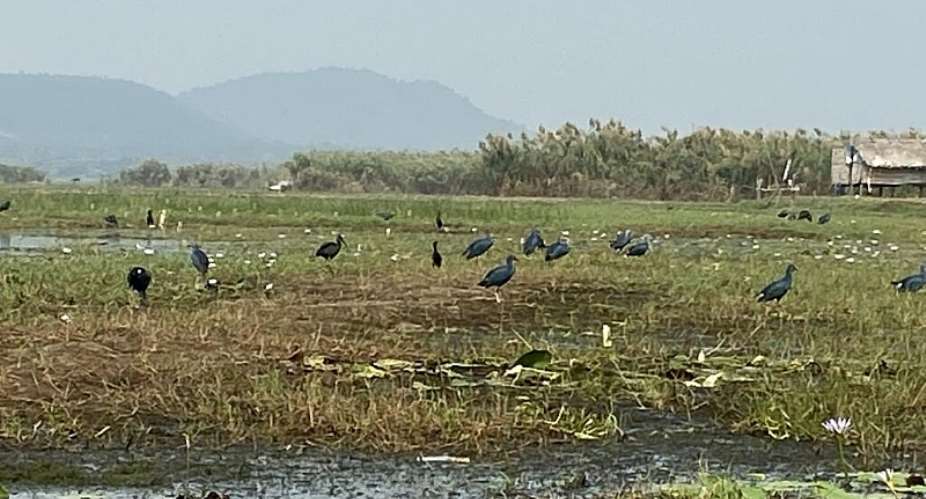Chilika Lake, the largest brackish water lagoon in the Indian state of Odisha, is a prominent biodiversity hotspot along the east coast with thousands of migratory birds visiting from different parts of the world every year.
But over time, this wetland has been exposed to changing environmental conditions, impacting the livelihood opportunities of the local people – especially fishing.
Climate extremes in coastal Odisha are predominantly rapid-onset events such as cyclones, floods and storm surges that happen on a regular basis.
“Since there were no jobs or alternative livelihoods in many coastal villages especially on the northern banks of the Chilika, many youths left for other cities in the country for employment,” Stalin Nayak, director of the Pantiss group of non-profits, told RFI.
“But things are changing now. We have mobilised the youth to undertake initiatives to strengthen livelihood opportunities for themselves and the community and prevent migration for work.”
Eco-tourism drive
A raft of initiatives in the last three years has seen interventions focused on water protection, rejuvenation and rebuilding livelihoods.
The UN agency, Unicef's Youth4Water, has mobilised local youth in Mangalajodi town, on the northern banks of the Chilika lake, in activities that strengthen ecosystem resilience.
The town has a population of 10,000 people, mostly engaged in work around the wetlands.
The campaign initiates weekly cleanliness drives around the tourist spots in the wetlands area and also a training session where the youth learn about the visual cues including certain bio-indicators to diagnose the water problems.
“It is proving a success. Ecotourism is on the rise and the youth are also training the local people to become tourist guides and drivers,” Anwesa Dutta, a coordinator for Youth4Water, told RFI.
The campaign is a platform for youths and it is estimated that over 100,000 youngsters are currently engaged in spreading the word across vulnerable pockets of Odisha.
Though there is no official data available on the number of migrants from Mangalajodi to other states, the restoration efforts have benefitted the locals and are arresting migration.
Locals testify that climate migration has reduced considerably since the youth-led initiatives were started with more employment opportunities emerging.
Building a resilient community
“I remember how things were a few years back. There has been transformation and today, Mangalajodi has become an iconic water body supporting sustainable livelihoods, responsible fishing and ecotourism,” Sugyan Behera, a tourist guide told RFI.
“I am amazed to see this. We have now everyone pitching in and even elders in the community are helping preserve natural water resources such as ponds and water bodies,” said Manoj Kumar Sahu, a village council official.
Because of a lack of economic opportunity and common natural disasters, Odisha has long been a source of migrant workers both in India.
For decades, economic stagnation in the region paired with growth and urbanization around other parts of India meant that Odisha was already a hotbed for migrants before climate change became a more prominent push factor.
“The depletion of fisheries and loss of biodiversity was apparent. There have been improvements now with an increase in capture fishery, reduction in weed infestation and increase in the population of migratory birds,” Srinivas Behera, a local resident, told RFI.
“We have a deep family-like bond with the birds and the ecosystem here.”
Climate change induced global warming has increased variability in the water cycle, leading to extreme weather events, decreased water availability and quality, threatening lives and livelihoods.
However, experiments like the ones carried out by the youth in Mangalajodi have given cause to residents to give back to the community and reduce cases of distress migration.





 Supreme court declares payment of wages to spouses of President, Vice President ...
Supreme court declares payment of wages to spouses of President, Vice President ...
 Publish full KPMG report on SML-GRA contract – Bright Simons to Akufo-Addo
Publish full KPMG report on SML-GRA contract – Bright Simons to Akufo-Addo
 Kumasi International Airport to begin full operations by end of June
Kumasi International Airport to begin full operations by end of June
 Election 2024: Our ‘real challenge’ is getting ‘un-bothered’ youth to vote – Abu...
Election 2024: Our ‘real challenge’ is getting ‘un-bothered’ youth to vote – Abu...
 [Full text] Findings and recommendations by KPMG on SML-GRA contract
[Full text] Findings and recommendations by KPMG on SML-GRA contract
 Renegotiate SML contract – Akufo-Addo to GRA, Finance Ministry
Renegotiate SML contract – Akufo-Addo to GRA, Finance Ministry
 J.B Danquah-Adu murder trial: Sexy Dondon to Subpoena Ken Agyapong, Ursula Owusu
J.B Danquah-Adu murder trial: Sexy Dondon to Subpoena Ken Agyapong, Ursula Owusu
 Galamsey: Five Burkinabes jailed 20 years each for mining
Galamsey: Five Burkinabes jailed 20 years each for mining
 'It's no crime' – Abu Sakara defends Alan's exit from NPP
'It's no crime' – Abu Sakara defends Alan's exit from NPP
 'We know all your houses, pay your bills now or we’ll disconnect you; we're all ...
'We know all your houses, pay your bills now or we’ll disconnect you; we're all ...
